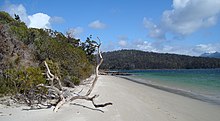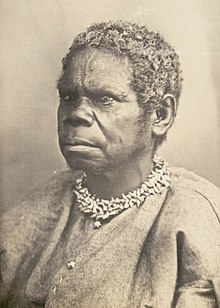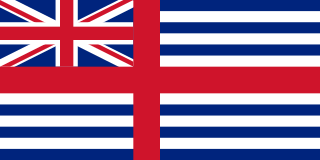
Van Diemen's Land was the colonial name of the island of Tasmania used by the British during the European exploration of Australia in the 19th century. A British settlement was established in Van Diemen's Land in 1803 before it became a separate colony in 1825. Its penal colonies became notorious destinations for the transportation of convicts due to the harsh environment, isolation and reputation for being inescapable. Macquarie Harbour and Port Arthur are among the most well-known penal settlements on the island.
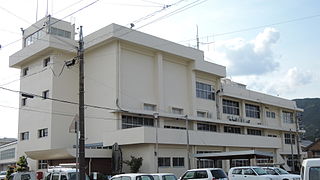
Mugi is a town located in Kaifu District, Tokushima Prefecture, Japan. As of 30 June 2022, the town had an estimated population of 3,734 in 1971 households and a population density of 66 persons per km². The total area of the town is 56.62 square kilometres (21.86 sq mi).

Sir George Arthur, 1st Baronet was Lieutenant Governor of British Honduras from 1814 to 1822 and of Van Diemen's Land from 1823 to 1836. The campaign against Aboriginal Tasmanians, known as the Black War, occurred during this term of office. He later served as Lieutenant Governor of Upper Canada from 1838 to 1841, and Governor of Bombay from 1842 to 1846.

The Spithead and Nore mutinies were two major mutinies by sailors of the Royal Navy in 1797. They were the first in an increasing series of outbreaks of maritime radicalism in the Atlantic World. Despite their temporal proximity, the mutinies differed in character. The Spithead mutiny was a simple, peaceful, successful strike action to address economic grievances, while the Nore mutiny was a more radical action, articulating political ideals as well, which failed.

HMS Pandora was a 24-gun Porcupine-class sixth-rate post ship of the Royal Navy launched in May 1779. The vessel is best known for its role in hunting down the Bounty mutineers in 1790, which remains one of the best-known stories in the history of seafaring. Pandora was partially successful by capturing 14 of the mutineers, but wrecked on the Great Barrier Reef on the return voyage in 1791. HMS Pandora is considered to be one of the most significant shipwrecks in the Southern Hemisphere.

Jørgen Jørgensen was a Danish adventurer during the Age of Revolution. During the action of 2 March 1808, his ship was captured by the British. In 1809 he sailed to Iceland, declared the country independent from Denmark–Norway and pronounced himself its ruler. He intended to found a new republic, following the examples of the United States and the French First Republic. He was also a prolific writer of letters, papers, pamphlets and newspaper articles covering a wide variety of subjects, and for a period was an associate of the famous botanists Joseph Banks and William Jackson Hooker. He left over a hundred written autographs and drawings, most of which are collected in the British Library. Marcus Clarke referred to Jørgensen as "a singularly accomplished fortune wooer—one of the most interesting human comets recorded in history".

Recherche Bay is an oceanic embayment, part of which is listed on the National Heritage Register, located on the extreme south-eastern corner of Tasmania, Australia. It was a landing place of the d’Entrecasteaux expedition to find missing explorer La Pérouse. It is named in honour of the Recherche, one of the expedition's ships. The Nuenonne name for the bay is Leillateah.
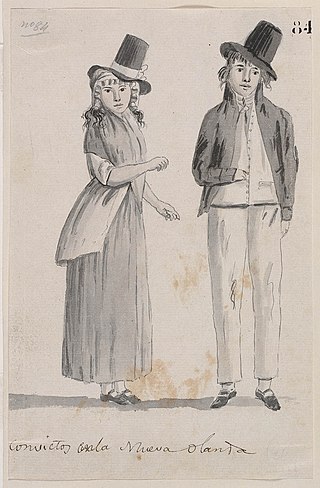
Between 1788 and 1868, about 162,000 convicts were transported from Great Britain and Ireland to various penal colonies in Australia.
Lady Denison was launched in 1847 at Port Arthur, Tasmania. She went missing in 1850 while sailing between Port Adelaide and Hobart, Tasmania. At the time there were strong allegations that convicts being carried on board murdered the other passengers and crew and headed for San Francisco, but all contemporary evidence supports the assertion that she sank off the far north-western tip of Tasmania.

Charles Gibbs was the pseudonym of an American pirate, born James D. Jeffers. Jeffers was one of the last active pirates in the Caribbean during the early 19th century, and was among the last persons to be executed for piracy by the United States.
Charlotte Badger was a former convict who was on board the Venus during a mutiny in Tasmania in 1806. Taken to New Zealand, she was rescued by Captain Turnbull of the Indispensible, and eventually she returned to Sydney. In the intervening centuries, a number of writers have contributed to the fiction that she took an active role in the mutiny and she became known – erroneously – as Australia's first female pirate.
Captain John Black, was an English seafarer, who had a short but eventful career that included privateering and exploration. He was best known, during his own lifetime, for a mutiny on Lady Shore in August 1797, as it sailed south in the Atlantic Ocean, bound for Sydney, New South Wales, carrying female convicts. As a result of the mutiny, Black and several other members of the crew were put into a small boat and left to find their way to the nearest land, being Brazil.
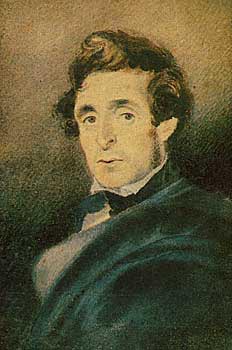
William Buelow Gould was an English and Van Diemonian (Tasmanian) painter. He was transported to Australia as a convict in 1827, after which he would become one of the most important early artists in the colony, despite never really separating himself from his life of crime.
Norfolk Island convict mutinies were a series of armed uprisings by convicts on the penal colony of Norfolk Island. All were unsuccessful.
Lady Shore was a merchantman launched at Calcutta in 1794. In 1797, she commenced a voyage as a convict ship to Australia until a mutiny cut the voyage short.
The Frederick escape was an 1834 incident in which the brig Frederick was hijacked by ten Australian convicts and used to abscond to Chile, where they lived freely for two years. Four of the convicts were later recaptured and returned to Australia, where they escaped the death sentence for piracy through a legal technicality.

Cyprus was a brig launched at Sunderland in 1816. The colonial government in Van Diemen's Land purchased her in 1826. In 1829 as she was transporting convicts from Hobart Town to Macquarie Harbour Penal Station, some of the convicts seized Cyprus. They sailed her via Japan to Canton, where they scuttled her.
Tiger was launched in America in 1813 and apparently captured on her maiden voyage. Captain Lewellyn purchased her in prize and initially she sailed between England and the Mediterranean. Under new ownership in the early-1820s, she started trading with New South Wales and India under a license from the British East India Company (EIC). She is last listed in 1833.
Calder was a brig launched in 1821 at Calcutta. A new owner in 1822 sailed her to Australia and she then traded in the Pacific until in 1825 she sailed to Chile and was wrecked at Valparaiso. There a new owner salvaged her and returned her to sailing under the name Indefatigable. On Indefatigable's first voyage the Chilean members of her crew mutinied, killing her captain. The mutineers sailed to Guam where the authorities took Indefatigable in prize. She was later lost in a typhoon in the China Sea.

The Badger escape occurred in July 1833 when twelve convicts in the British penal colony of Van Diemen's Land used the government schooner Badger to escape to Macau, China. Most of the convicts involved were experienced seafarers who had been appointed to man the vessel soon after their transportation. For this, the colonial press accused the government of extreme negligence, and also called for the removal of lieutenant-governor George Arthur. In The History of Tasmania (1852), John West wrote that, of all the escapes from Van Diemen's Land, "never was the government more culpable, or the prisoners less so, than in the instance of the Badger".

